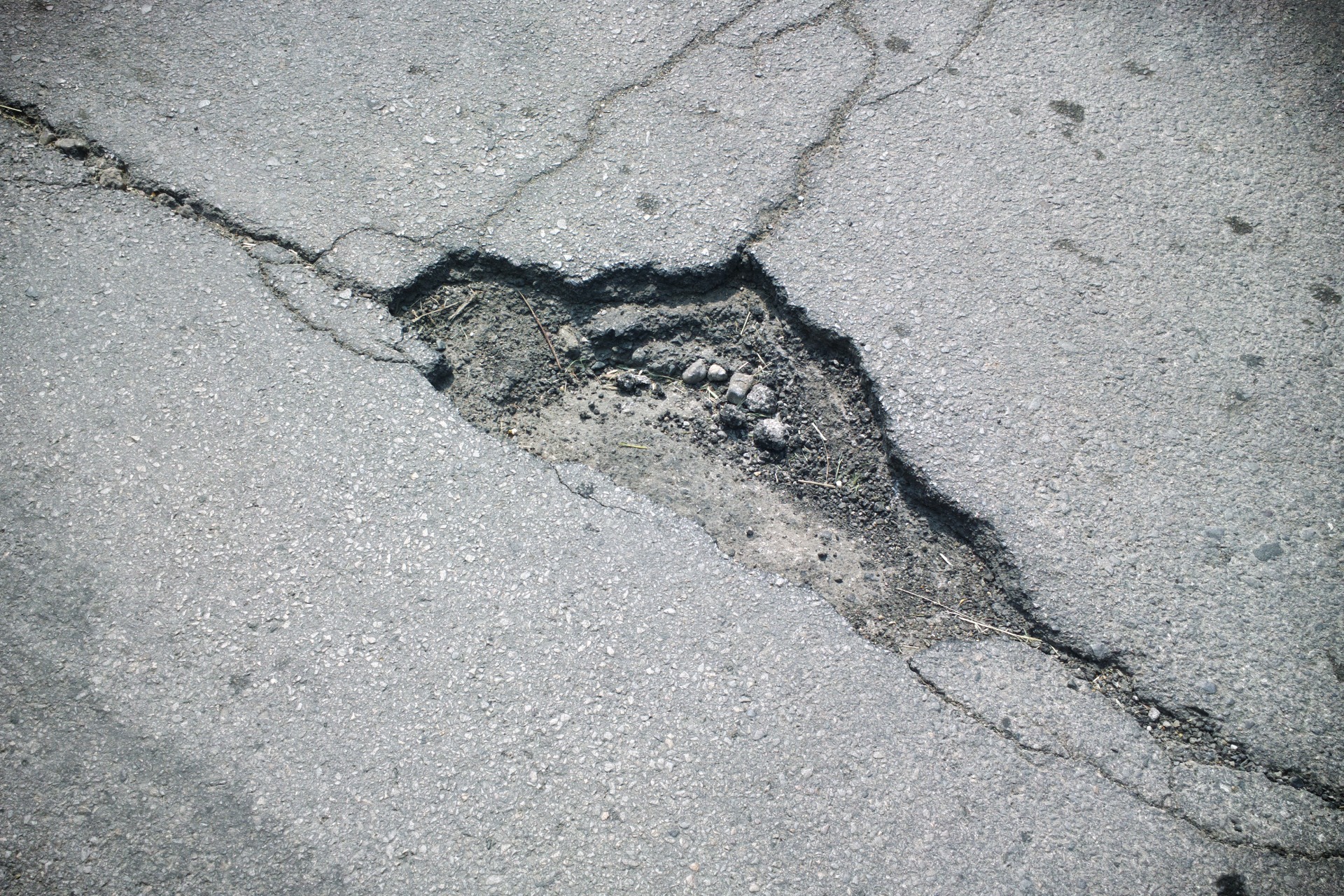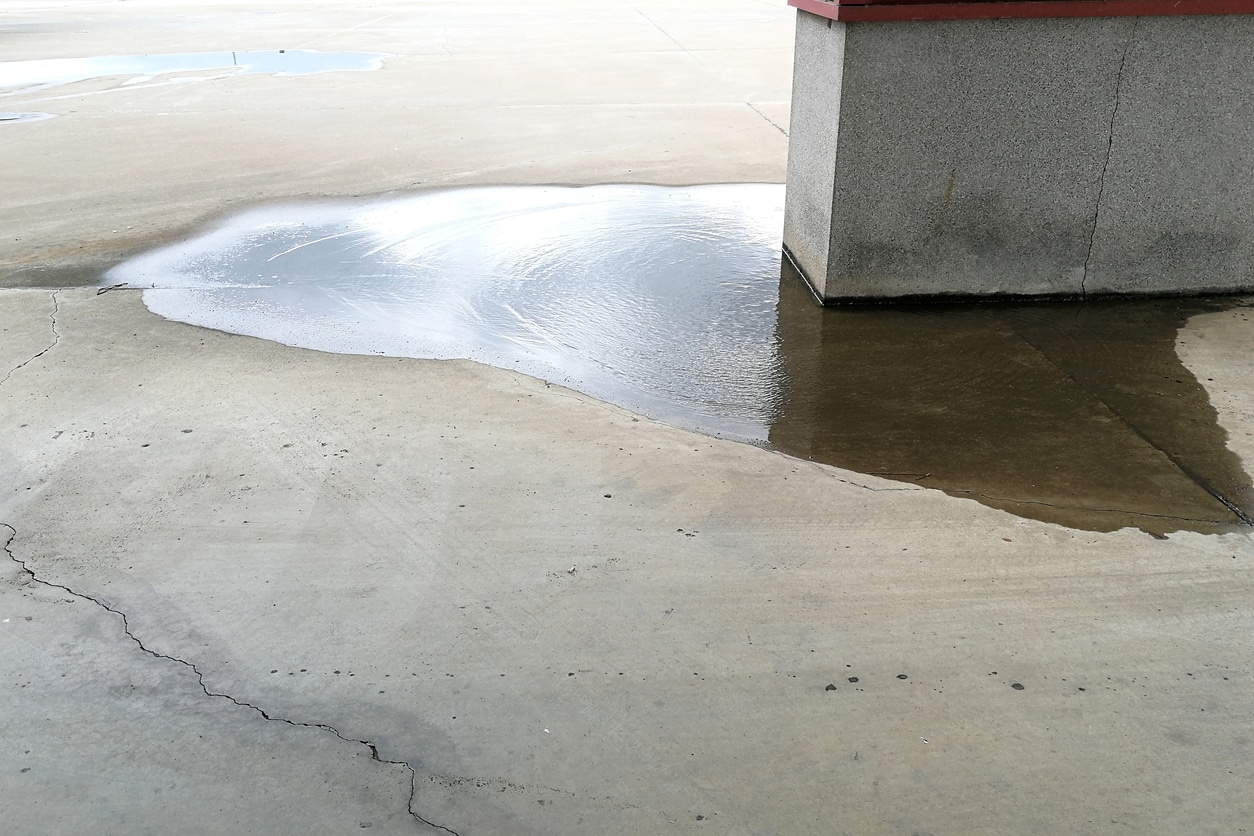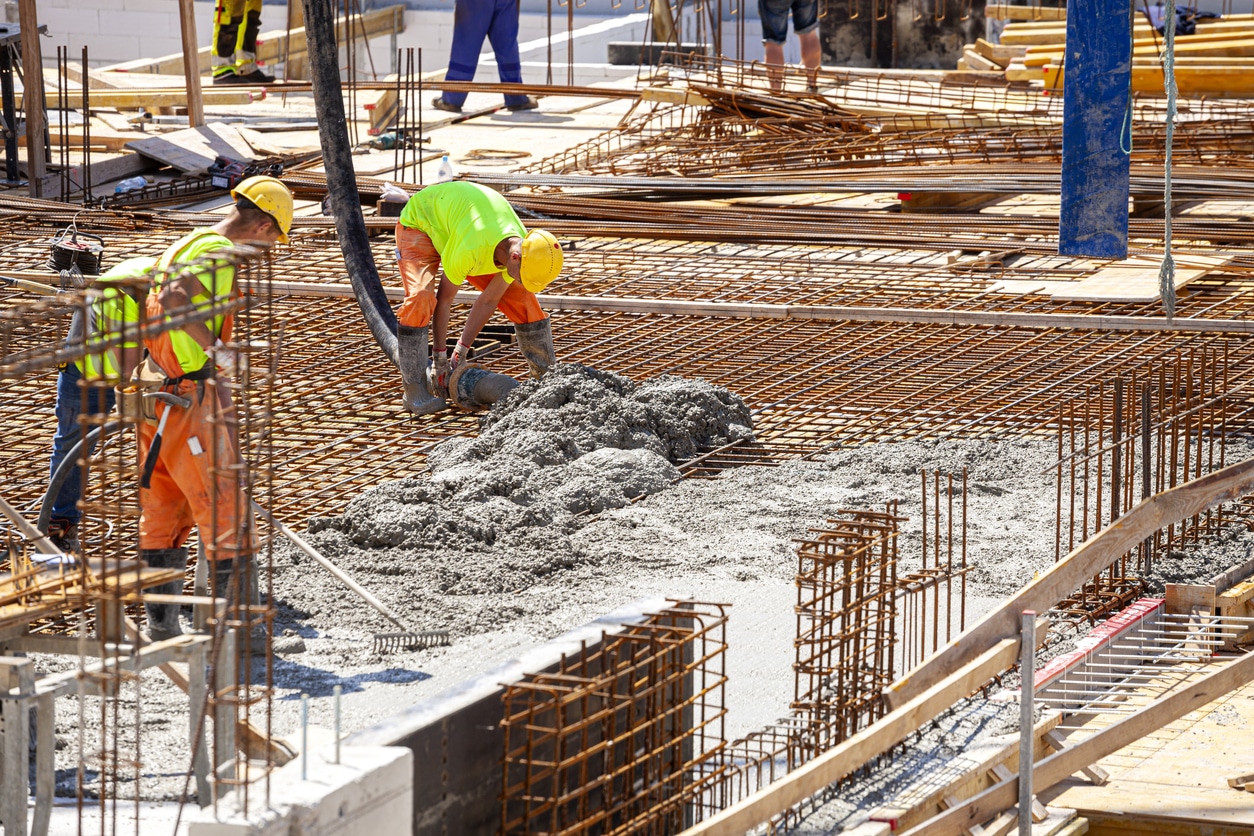Truck parking lots for commercial use must accommodate heavy loads and larger vehicles. Additionally, mixed-use…

How Do Potholes Form?
The familiar frustration and annoyance from hitting a jarring pothole on the road or in a parking lot happens far too often. More than nuisances for commercial property owners, potholes can become a serious issue, causing loss of customer retention and posing potential safety hazards.
If you’re wondering how to avoid the recurrence of potholes on your commercial property’s concrete surfaces, you may be asking, how do potholes form?
We’re covering the science behind potholes, the causes behind why they form, and the detriments they pose to commercial properties. Most importantly, we’ll share what steps you, as a commercial property owner, can take to prevent them and ensure the longevity and safety of your concrete surfaces.
How Do Potholes Form on Concrete Surfaces?
Potholes, those aggravating bowl-shaped cavities that develop on the surface of roads and parking lots, form as a result of small, seemingly innocuous cracks. As water collects and potentially freezes in the fractured concrete and the agitation of traffic grinds over top of it, gradually, the pavement breaks apart, forming a pothole.
Step-by-Step Process of How Potholes Form
From the initial cracks to the eventual collapse of the pavement, read on to discover the elements and factors that transition a smooth area of concrete into an unsightly, gaping depression.
1. Surface Cracks
Potholes all start with tiny, often imperceptible cracks on the concrete surface caused by a combination of factors, including age, weather conditions, and traffic.
2. Moisture Infiltration
Due to rain or snow, water penetrates the cracks in the concrete, weakening the pavement’s structural integrity. Additionally, water can carry salt and other corrosive substances, exacerbating the damage.
3. Freeze-Thaw Cycles
In regions with fluctuating temperatures, moisture that seeps into cracks in the concrete can freeze during cold spells. As water freezes, it expands, applying pressure on the surrounding concrete and widening existing gaps.
4. Traffic Wear and Tear
The constant passage of vehicles over these weakened areas compacts the soil beneath the concrete. The abrasive effects of tires further deteriorate the concrete surface.
5. Erosion
Amplifying the deterioration process, water movement erodes the underlying layers of the concrete materials, creating voids beneath the surface.
6. Pothole Emergence
Over time, the continuous process of moisture infiltration, freeze-thaw cycles, traffic compaction, and erosion weakens the concrete. Eventually, the concrete collapses under the weight of vehicles, leading to the emergence of a pothole.
What Are the Dangers of Potholes in a Concrete Parking Lot?
Potholes can pose significant detriments to concrete parking lots, creating many problems for commercial property owners.
Safety Hazards for Pedestrians and Vehicles
Uneven surfaces can cause pedestrians to trip and fall, leading to potential injuries and liability issues. For vehicles, hitting a pothole can damage tires, wheels, suspension systems, and undercarriages. Severe accidents can occur when drivers swerve to avoid potholes or lose control after hitting them.
Vehicle Damage and Repair Costs
The impact of hitting a pothole can cause immediate damage, leading to costly repairs or replacements. In the long run, repeated encounters with potholes can shorten the lifespan of vehicles and increase overall maintenance costs. For commercial property owners, unhappy tenants and visitors will likely blame your deteriorating parking lot for their vehicle troubles.
Impact on Property Aesthetics and Value
Potholes detract from a commercial property’s aesthetic appeal, give an impression of neglect, and can negatively affect the property’s market value. Prospective tenants or buyers will likely be deterred by a parking lot in disrepair, potentially leading to decreased occupancy rates or lower property values.
Legal Liabilities for Property Owners
If someone sustains injuries due to a pothole on your property, you may be responsible for medical expenses, pain and suffering, and legal fees. Legal battles can be protracted and costly, further underscoring the importance of proactive pothole prevention.
Disruption of Business Operations
For businesses operating on your commercial property, customers and employees may avoid your property due to the inconvenience and potential damage to their vehicles. Reduced foot traffic and diminished customer satisfaction can lead to financial losses and impact the success of businesses within your property.
How Can Commercial Property Owners Prevent Potholes from Forming?
The costly and inconvenient consequences for your commercial property mentioned above highlight the urgency of promptly addressing potholes. The following practical strategies can help you reduce pothole formation and avoid these potential issues.
Regular Inspections
Implement a routine maintenance schedule with visual inspections of your concrete parking lot. Closely examine the entire surface, looking for early signs of cracks, depressions, or damage to catch issues in their infancy, allowing for timely intervention.
Pothole Awareness
Encourage proactive communication to address problems promptly. This can be done by establishing reporting mechanisms for individuals to notify property management about potential potholes or pavement issues.
Routine Cleaning and Debris Removal
Beyond enhancing the aesthetics of your property, keep your parking lot free of debris, leaves, and dirt. These seemingly innocuous elements can trap moisture, exacerbating the conditions conducive to pothole formation.
Proper Drainage Solutions
Adequate drainage prevents water from infiltrating your concrete surface, reducing the risk of potholes. Consider installing drainage systems such as catch basins, trench drains, or French drains to redirect water away from your parking lot.
Fill Material Selection
When repairing or resurfacing your parking lot, choose fill materials that are durable and water-resistant. High-quality fill materials help maintain the structural integrity of your concrete surface, making it more resistant to cracks and potholes.
Sealcoating and Surface Protection
Sealcoating applies a protective layer over your concrete surface that acts as a shield, preventing water, UV rays, and other environmental factors from penetrating the concrete. This effective method can significantly extend the lifespan of your pavement. It also enhances the appearance of your parking lot and simplifies maintenance by making it easier to clean.
Professional Concrete Repair and Paving Services
Experienced contractors have the knowledge and equipment needed to address existing issues and prevent future ones. Don’t wait for potholes to become a problem on your property. Take the proactive step of contacting a professional like K&E Flatwork to ensure the longevity and safety of your concrete surfaces.
At K&E Flatwork, we specialize in providing superior commercial concrete repair and paving services in Kansas City with a commitment to quality and customer satisfaction. Contact us today to speak with a concrete specialist.



